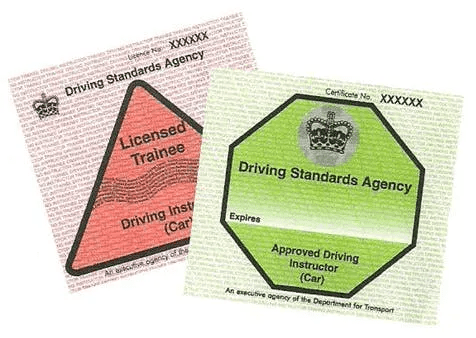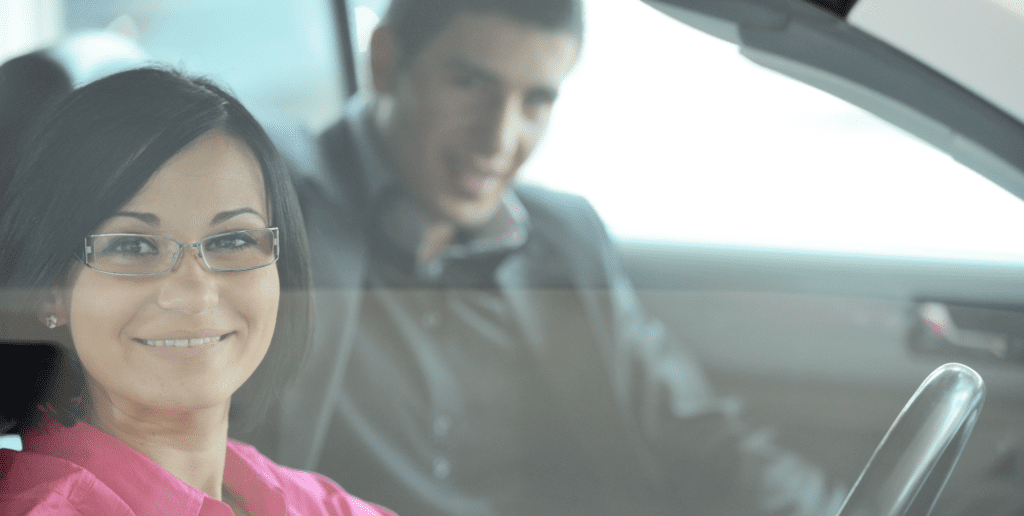
Introduction to First Driving Lessons
Overview of the First Lesson
Embarking on your first driving lesson is an exciting step towards gaining independence and mobility. In the UK, learner drivers often feel a mix of anticipation and nerves as they sit behind the wheel for the first time.
Your first lesson typically focuses on the basics:
- Getting to know the vehicle
- Understanding its controls
- Basic manoeuvring.
It’s important not to expect too much of yourself right away. The goal is to build your confidence and familiarity with driving.
Common Emotions and How to Manage Them
It’s completely normal to feel nervous, excited, or even a bit overwhelmed before your first driving lesson. These emotions are common among new learners.
To manage these feelings, it’s beneficial to talk to your driving instructor about your nerves; they can adjust the pace of the lesson accordingly.
Breathing exercises and positive visualisation can also be helpful techniques to reduce anxiety and increase your comfort level behind the wheel.
Goals for the First Driving Lesson
The primary goals for your first lesson are to ensure that you become comfortable with the basic controls of the car, such as the steering wheel, pedals, and indicators.
You will also learn how to safely start and stop the car. Don’t worry about mastering these skills immediately; this session is just the starting point.
Before the Driving Lesson
Getting a Provisional Driving Licence
Before you can start learning to drive, you must obtain a provisional driving licence. You can apply for this licence from the DVLA (Driver and Vehicle Licensing Agency) once you are 15 years and 9 months old, but you can only start driving a car when you turn 17.

You can apply online at the DVLA website or through a Post Office. Make sure you have your identity documents and an address in the UK where you can register.

Choosing the Right Driving Instructor
Selecting the right driving instructor is crucial as they will significantly influence your learning experience and progression.
Look for an instructor who is not only fully qualified (approved by the DVSA – Driver and Vehicle Standards Agency) but also someone with whom you feel comfortable.

Recommendations from friends or family can be incredibly valuable here. Additionally, consider whether you prefer learning in a manual or automatic car, as this will affect your choice of instructor and vehicle.
Preparing Mentally and Physically for Your Lesson
To make the most out of your first lesson, it’s important to prepare both mentally and physically. Ensure you have a good night’s sleep before the day of the lesson so that you are rested and alert.
Avoid consuming any alcohol or drugs before driving, as these can impair your ability to learn and react. Dress comfortably and choose sensible footwear; bulky shoes can hinder your ability to operate the pedals.

Mentally, prepare by familiarising yourself with the basic layout and operation of a car through online resources or books, which can help reduce initial overwhelm during your lesson.
Meeting Your Driving Instructor
The Role of a Driving Instructor
A driving instructor plays a crucial role in your journey to becoming a proficient driver. They are not only responsible for teaching you the skills required to drive safely but also for instilling confidence and good driving habits.
A good instructor will adapt their teaching style to match your learning pace, provide constructive feedback, and ensure that you are comprehensively prepared to meet the requirements of the UK driving test.
Establishing Communication and Comfort
One of the most important aspects of learning to drive is communication. During your first lesson, it’s vital to establish a comfortable communication channel with your instructor.
This includes discussing how you prefer to receive feedback and how much information you would like to be given while you are driving.
A supportive instructor will encourage you to ask questions and express any concerns you may have, creating an environment where you feel safe and at ease.

Discussing Expectations and Any Nerves
It’s essential to discuss your expectations and any nerves you might have with your instructor at the beginning of your lesson.
This discussion helps set realistic goals for each session and can help alleviate any anxiety.
Your instructor can tailor the lesson to better suit your needs and learning style, perhaps starting on quieter roads if you are particularly nervous about traffic.
Getting Acquainted with the Car
Adjusting Your Seat and Mirrors
Before you start driving, it’s important to ensure that your seat and mirrors are properly adjusted to provide comfort and maximum visibility.
Adjust your seat so that you can easily reach all controls and see the road clearly. Your mirrors should be adjusted to give you the best possible view around the vehicle with minimal blind spots.
This not only aids in driving but also boosts your confidence as you have better control and awareness of your surroundings.
Understanding the Car’s Controls
Familiarising yourself with the car’s controls is a fundamental part of your first driving lesson. Your instructor will explain the function of each control, including the:
- Accelerator
- Brakes
- Clutch (in manual cars)
- Indicators
- Lights
Learning how these controls work and where they are located is crucial for effective vehicle operation and safety on the road.
Learning About the Dashboard and Cockpit Drills
The dashboard contains several instruments and warning lights that provide important information about the car’s status (such as speed, fuel level, and engine temperature).
Understanding these indicators is crucial for safe driving. Cockpit drills—the routine checks you make every time you get into the car, such as checking your seat position, mirrors, and the functionality of important controls—are also a key focus of the initial lesson.
These drills ensure that the vehicle is set up correctly and safely before you start driving.
Basic Vehicle Operation
Starting the Engine
The process of starting the engine might seem straightforward, but it’s the first real step in operating a vehicle.
Your instructor will guide you through the procedure, which involves ensuring the car is in neutral (for manual transmissions), engaging the ignition, and possibly using the clutch.
This routine not only sets the stage for all driving activity but also helps in building your familiarity with the car’s primary controls.

Steering Techniques and Vehicle Manoeuvrability
Steering techniques are fundamental to effective driving. During your first lesson, you will learn how to hold the steering wheel correctly, usually with your hands positioned at ten and two o’clock or nine and three o’clock on the wheel.
Proper steering control enhances vehicle manoeuvrability and ensures safer driving. You’ll practice making smooth steering adjustments using the ‘push and pull‘ technique, which is crucial for maintaining control of the vehicle during various driving manoeuvres.
Basic Manoeuvres – Clutch Control, Braking, and Accelerating
Mastering basic manoeuvres such as clutch control (in manual cars), braking, and accelerating is essential.
Clutch control involves learning how to engage and disengage the clutch smoothly to avoid stalling the car, which is a common challenge for new drivers.
Effective braking and accelerating practices ensure that you can control the speed of the vehicle safely, adapting to different traffic conditions and road signs.
Your First Time on the Road
From the First Junction to Managing Simple Traffic Scenarios
Your initial venture on the road will involve navigating from the first junction and dealing with simple traffic scenarios.
This part of the lesson aims to apply what you’ve learned in a controlled, real-world environment. Your instructor will help you understand how to approach junctions, use indicators, and make turns safely.
Managing these scenarios effectively is crucial for building your confidence and competence in handling typical driving situations.
Practicing Safe Stopping and Starting
Safe stopping and starting are critical skills that you will practice during your first outing on the road.
This involves learning how to come to a smooth stop at traffic signals, stop signs, and other necessary points, as well as how to start moving again without causing abrupt movements or stalling. These skills are not only essential for your driving test but are vital for everyday driving safety.
Continuous Learning and Building Confidence
The theme of continuous learning and building confidence underpins your entire experience as a learner driver.
Each lesson builds on the previous one, gradually increasing in complexity as you become more comfortable and skilled.
Your instructor will continuously assess your progress and introduce new challenges at a pace that suits your growing abilities, ensuring that you are always learning and improving.
After the Driving Lesson
Feedback and Discussion with Your Driving Instructor
After your driving lesson concludes, taking the time for feedback and discussion with your instructor is crucial.
This conversation is an opportunity to reflect on what went well and identify areas where further improvement is needed.
Your instructor will provide constructive criticism and praise where due, helping you understand your strengths and weaknesses.
This feedback is invaluable as it guides your learning process and helps tailor future lessons to your specific needs.
Reviewing What You’ve Learned
Reviewing what you’ve learned during the lesson is essential for reinforcement. Go over the key skills and knowledge areas covered, such as starting the engine, steering techniques, and basic manoeuvres.
Reflecting on these points helps consolidate your learning and prepares you for practising these skills, either in your own time (if you have access to a private vehicle and a supervising driver) or in your next lesson.
This review process also encourages you to become an active participant in your learning journey.
Planning for the Next Lessons and Long-Term Goals
Planning for the next lessons involves setting clear, achievable goals for both short-term and long-term improvement.
Discuss with your instructor what the upcoming lessons will focus on, based on your current progress and areas that require more attention.
This might include more complex driving scenarios, different types of roads, or manoeuvres such as reversing and parking.
Establishing long-term goals, such as preparing for your theory and practical driving tests, will also be part of this planning.
These goals should be realistic, considering your learning pace and personal confidence behind the wheel.
Frequently asked questions
You can apply for a provisional driving licence when you are 15 years and 9 months old, but you can only start driving a car when you turn 17.
No, you do not need to pass the theory test before starting driving lessons. However, you must pass it before you can book your practical driving test.
The number of hours needed varies between individuals, but on average, most people require approximately 45 hours of professional instruction, supplemented by around 22 hours of private practice.
You should bring your provisional driving licence and wear comfortable clothing and suitable footwear. Glasses or contact lenses are necessary if you need them for driving.
Yes, you can learn to drive in an automatic car. However, remember that passing your test in an automatic only qualifies you to drive automatic vehicles, whereas passing in a manual car allows you to drive both.
Cockpit drills involve the checks you need to perform every time you get into the car before starting the engine.
These include adjusting the seat, mirrors, and seatbelt, and ensuring that all controls are within reach and operational.
Choose a driving instructor who is approved by the DVSA (Driver and Vehicle Standards Agency). It’s also helpful to read reviews or ask for recommendations from friends or family to find an instructor who suits your learning style.
If you fail your driving test, you can take it again after 10 working days. This interval allows time to take additional driving lessons to improve on the areas that led to the test failure.
To reduce nervousness, ensure you are well-rested and have eaten. Practice breathing exercises, and discuss your anxieties with your driving instructor so they can help you feel more comfortable.
Yes, the person accompanying you must be over 21 years old and have held a full driving licence for at least three years. They must be qualified to drive the type of vehicle you are practising in (i.e., manual or automatic).


